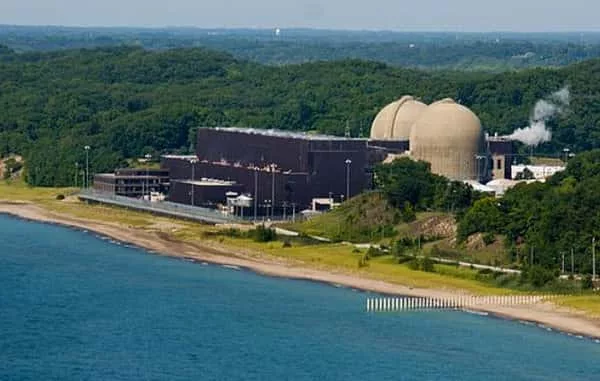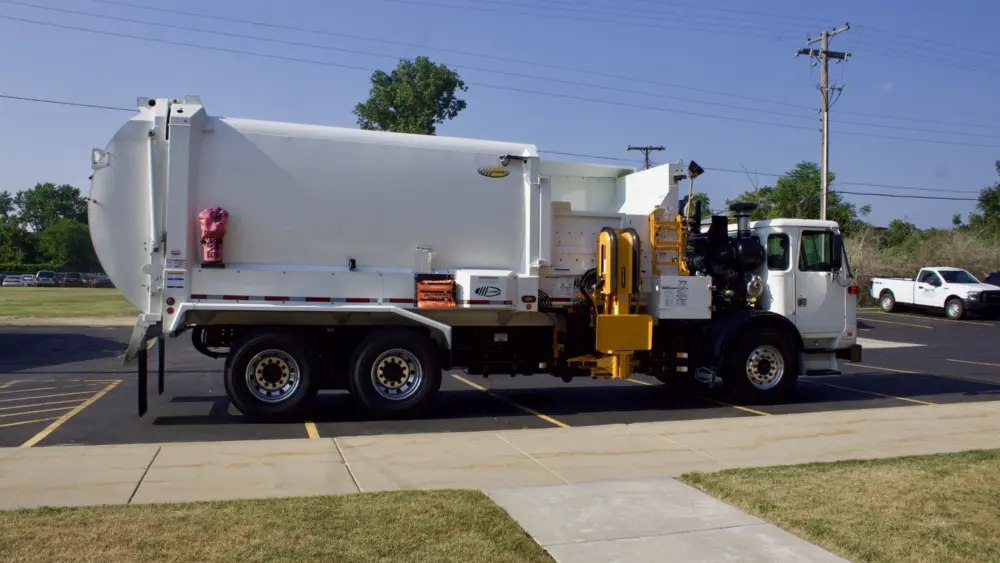Just days after the brief, post-Labor Day lull in local hotels, motels and other lodging facilities began as summer tourists returned to their home front elsewhere in the state and nation, there’s a good chance the “no vacancy” signs will be back this week, especially for facilities in close proximity to the D.C. Cook Nuclear Plant at Bridgman. A lot of room nights will be logged in the coming weeks as well.
Indiana Michigan Power’s Cook Nuclear Plant Unit 1 will begin its twenty-seventh refueling outage Wednesday at 12:01am. Power was reduced to 50-percent last evening (Sunday, September 10th) for equipment testing prior to the outage. The unit will have operated for 504 consecutive days at a capacity factor of 101.3-percent, generating 12,594,033 megawatt-hours of electricity. All three results rival the unit’s record setting run that ended in September, 2014.
Believe it or not, that’s not a misquote — it is possible to run greater than 100-percent capacity by gaining efficiencies through lower than normal lake water temperatures. Running continuously between refueling outages is known in the industry as a breaker-to-breaker run as the unit’s output circuit breakers remained connected to the transmission grid for the entire 18-month fuel cycle.
Cook Unit 2 remains at 100-percent power.
In addition to refueling the reactor and performing regular maintenance and testing work, the outage will be extended due to inspection and replacement of baffle bolts, which support internal components of the reactor vessel. Specific outage duration is considered proprietary information, but the outage is expected to be completed in the fourth quarter of this year.
The Cook reactors are two of the nine nuclear units in the U.S. with a design considered to be most susceptible to baffle bolt degradation, an industry issue that has come to light in recent years. Any degraded bolts will be replaced and it’s likely that additional bolts will be proactively replaced during this outage.
The baffle bolts hold the baffle plates in place which direct water flow through the fuel assemblies in the reactor. Highly specialized repair tools are used to resolve the issue. The identified causes of the failed bolts were considered in the replacement bolt design and repair. Additional baffle bolt inspections and replacements, and a potential design change to minimize stress on baffle bolts, may also take place in subsequent outages for both Cook units.
Shane Lies is Site Vice President at the Cook Plant. He says, “Doing the right work at the right time is exemplified in the breaker-to-breaker run of the unit during the last fuel cycle.” He adds, “Extension of this outage is the right thing for us to do at this time. Taking action now on the baffle bolt issue will begin the overall resolution of this important matter and support continued safe operations to 2034 and 2037.”
There are also several significant upgrades to plant systems and components that are associated with the plant’s Life Cycle Management program. In total, there are 117 upgrade and replacement projects for both units costing $1.16 billion. These are required by the 20-year operating license extension granted by the Nuclear Regulatory Commission in 2005.
About 1,000 contracted workers will supplement the regular 1,200-person plant staff leading up to and during the outage. More than 11,500 maintenance, inspection and equipment modification job activities totaling almost 400,000 work-hours are scheduled for two daily 12-hour work shifts.
At full capacity, the 1,084-net MW Unit 1 and 1,194-net MW Unit 2 combined produce enough electricity for more than one and one half million average homes.
Indiana Michigan Power is a wholly owned subsidiary of American Electric Power.






